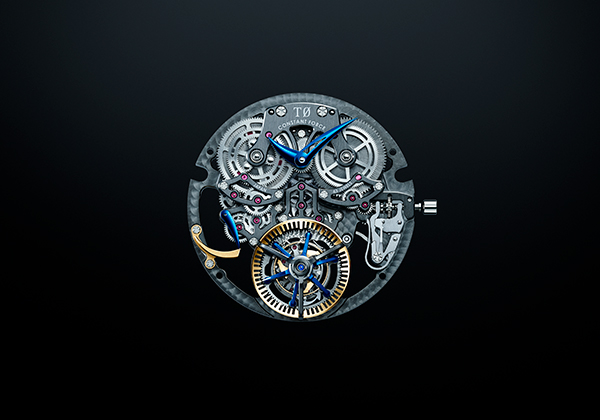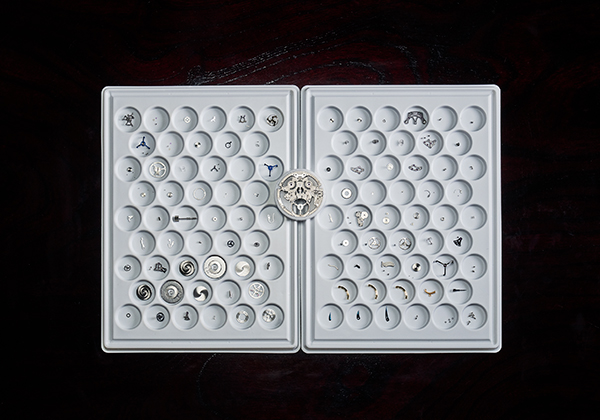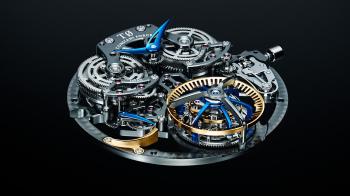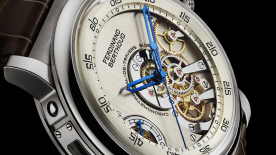We ought to expect this by now — and yet it always comes as a surprise. Even for those who already know the power of Grand Seiko, its capacity for innovation and creativity, the venerable Manufacture continually provides new things to discover and learn. The T0 is proof of this. Is it a watch? No, it is a movement. Will become a watch? Perhaps. Does it resemble, closely or remotely, a known achievement? No, nothing. Frédéric Bondoux, Grand Seiko's European Director, reveals a few secrets about this fresh enigma.

Deux concepts-clés
On connaissait les concept watch. Voici le concept mouvement : un calibre 100% manufacture, d’un diamètre de 36,3 mm, manuel, 43 rubis, de 8,22 mm d’épaisseur, battant à 28'800 alt./ heure. Il est parfaitement fonctionnel mais, dans l’immédiat, il n’est affecté à aucune référence existante. L’art pour l’art ? Très probablement pas. « C’est le premier prototype jamais rendu public par Grand Seiko et il a été breveté au Japon, en Chine, aux États-Unis et en Suisse », explique Frédéric Bondoux. « Si l’on brevette, c’est que l’on anticipe un développement technique et commercial ». En somme, les développements du T0 se retrouveront selon toute évidence dans de prochains modèles. Mais de quels développements parle-t-on ?
Ils tiennent en deux mots : Tourbillon et Remontoir d’Égalité. L’objectif de Grand Seiko est donc très clair : la précision, voire l’ultra précision. Le tourbillon a été breveté par Breguet en 1801. Il vise à brasser toutes les positions de l’échappement afin d’en offrir la meilleure moyenne de marche. Le remontoir d’égalité, quant à lui, est l’un des nombreux mécanismes conçus pour obtenir une transmission de force motrice constante à la roue d'échappement. C’est donc dispositif dit « à force constante », un régulateur de couple placé avant l’échappement, de manière à ce que ce dernier reçoive une énergie parfaitement linéaire.

In fact, when the level of energy supplied to the remontoir falls below a certain level, the remontoir spring can no longer arm itself. Grand Seiko has achieved extraordinary results: +/-0.5 seconds out of 50 hours of constant force power reserve, with 22 hours remaining during which the tourbillon can continue to operate but alone, without the remontoir. “These measurements were taken while wearing the watch, on the wrist,” explains Frédéric Bondoux.
Why Is This Important?
Firstly, because it is the first tourbillon designed by Grand Seiko (though the tourbillon already exists within Credor, a sister brand). Second, because Tourbillons à Remontoir d'Égalité are rare, very rare. The most recent Remontoir d'Égalité is that of Ferdinand Berthoud, the FB2-RE (the RE stands for "Remontoir d'Égalité"), but you can only count them on the fingers of one hand. One reason for this is that when you integrate a Remontoir d'Égalité within a tourbillon mechanism, it can be extremely energy-intensive, which is why the T0 has two barrels.

Finally, the T0's tourbillon is of an atypical construction. It looks like a tourbillon with a 6-armed upper tourbillon cage. This is not the case: what appears to be one single cage is actually two superimposed, radially offset cages, each with three arms. The one above is the one of the remontoir. The one underneath is associated to the tourbillon. The first one is mechanically engaged with the second one. As it rotates, the first cage arms a spring which is unlocked once every second, providing energy to the tourbillon carriage and thus the escape wheel. It is a vertical and non-linear construction — up until now, similar mechanisms have been seen only at a very small handful of brands such as FP Journe, IWC and Ferdinand Berthoud. The fascinating nature of this construction comes at a spatial cost — 2.13 mm is the height of the two cages.
“The T0 was born under the direction of Mr Kawauchiya,” concludes Frédéric Bondoux. “He is an engineer by training, a graduate of the Tokyo Institute of Technology, who passed his WOSTEP certification and then joined Seiko in 2010. There he contributed to the development of the 9SA5 calibre, before diving into the T0 calibre. There is no doubt that the man is already working on getting it into production, either partially (without tourbillon) or totally.”





